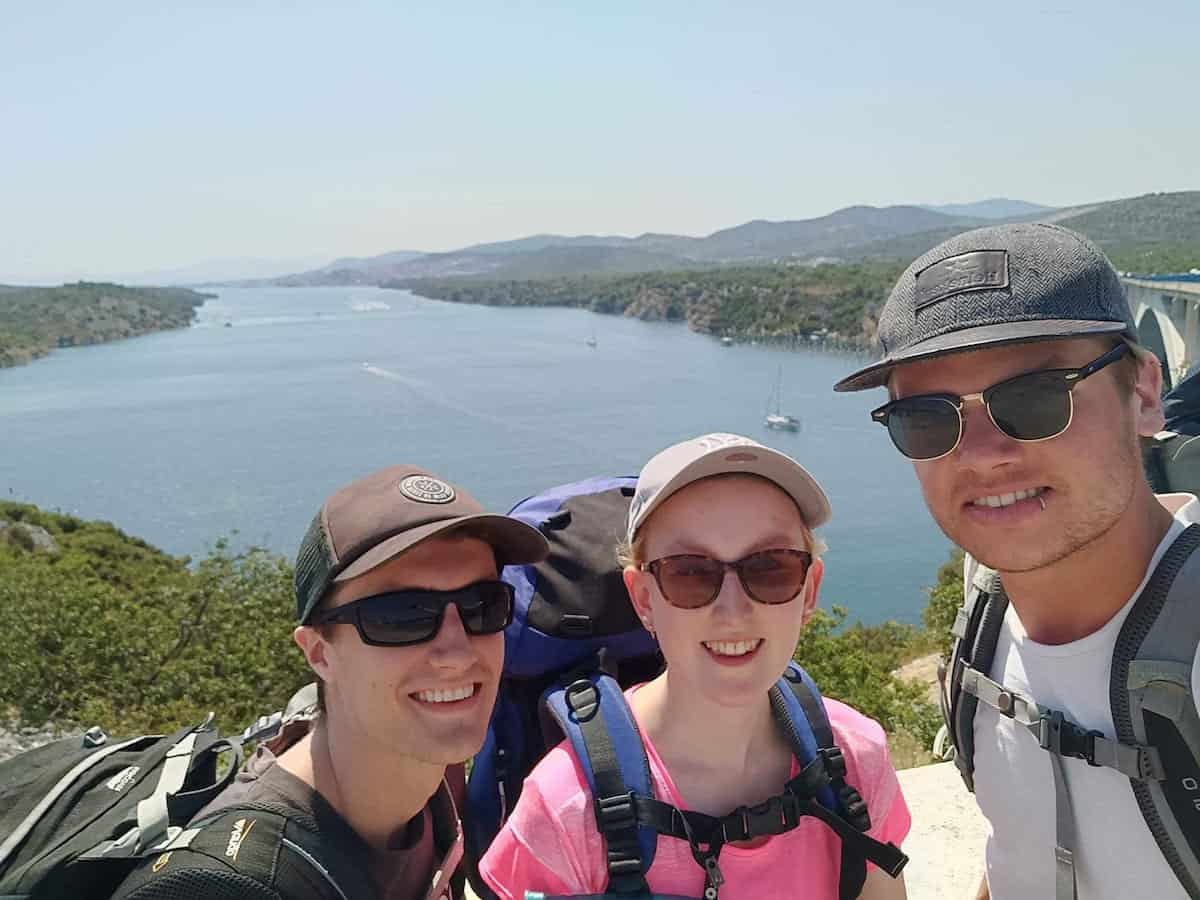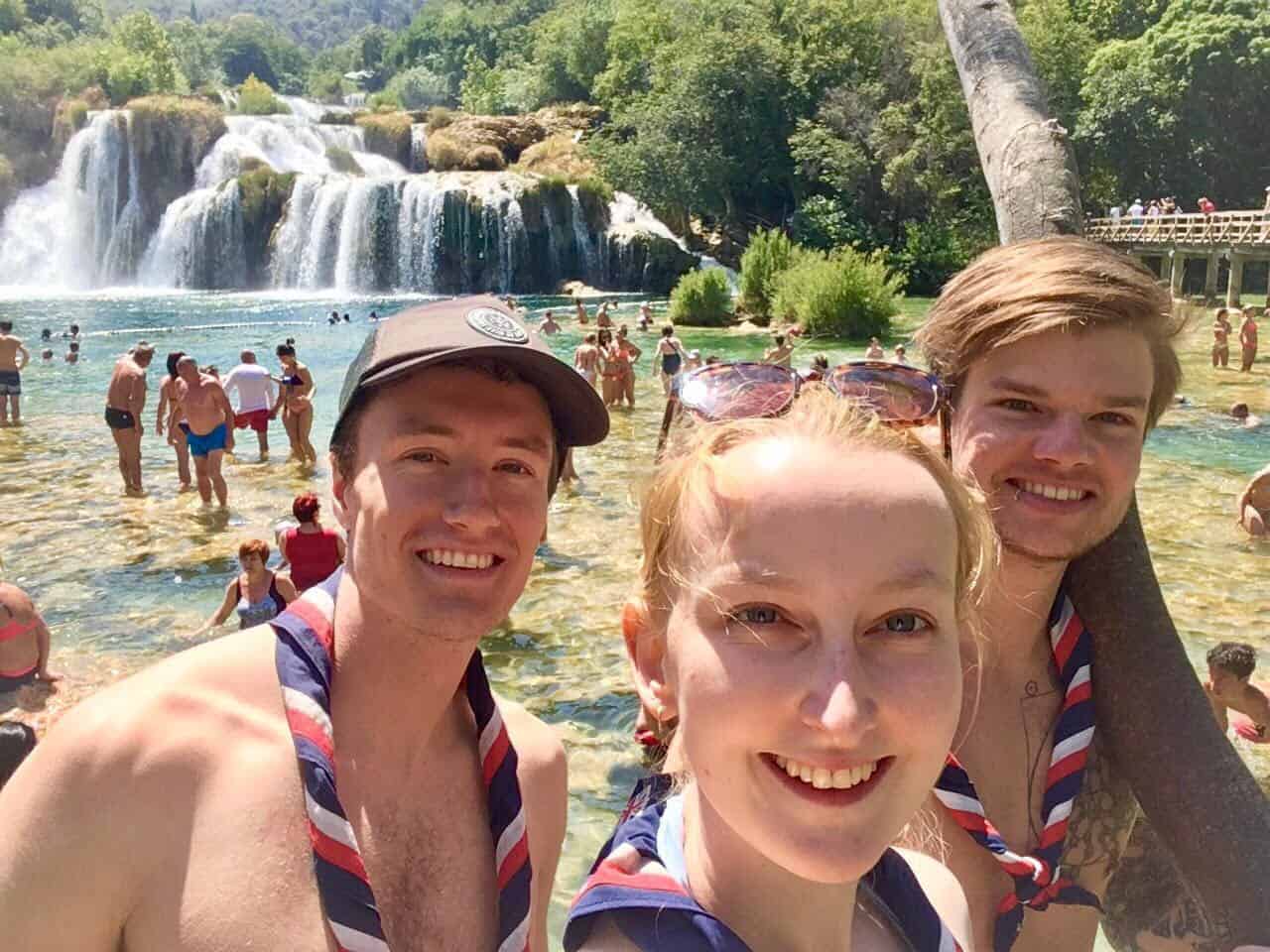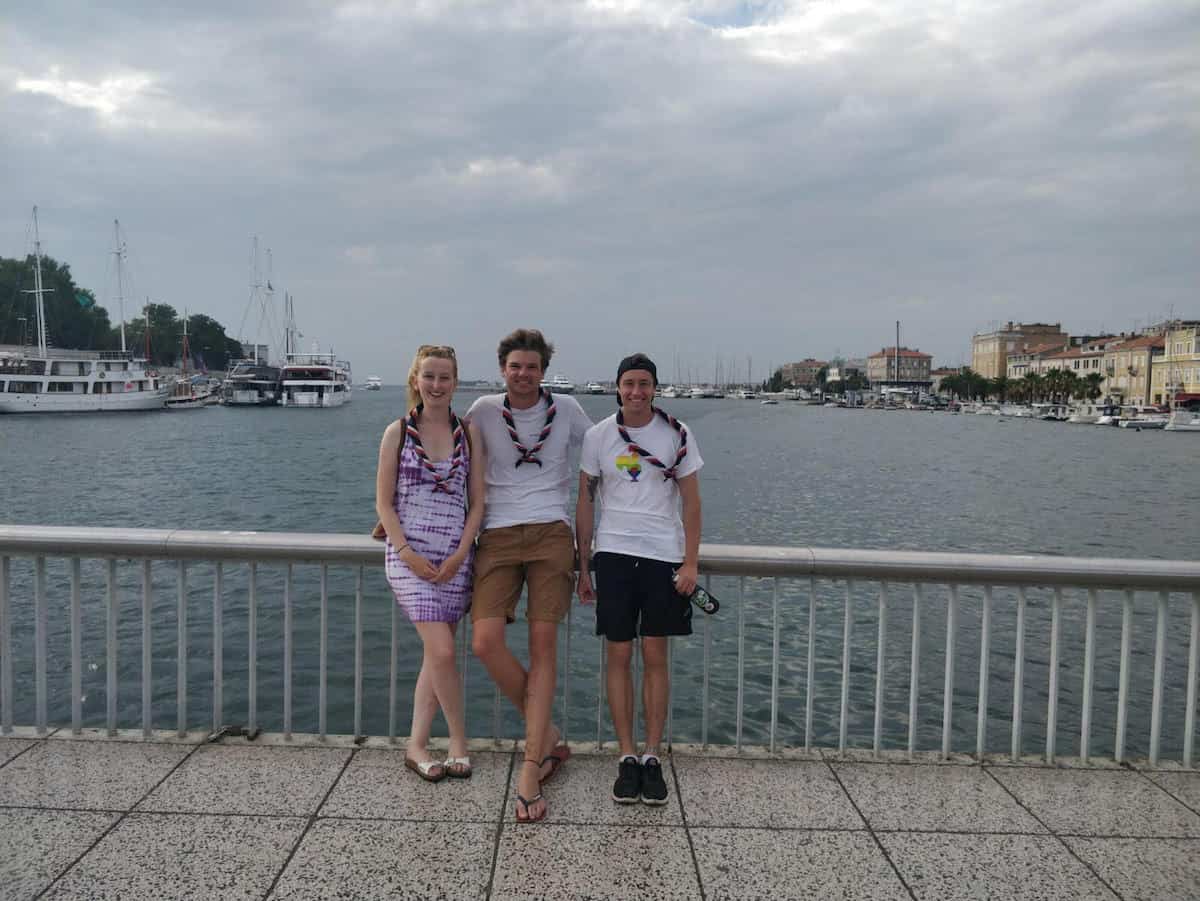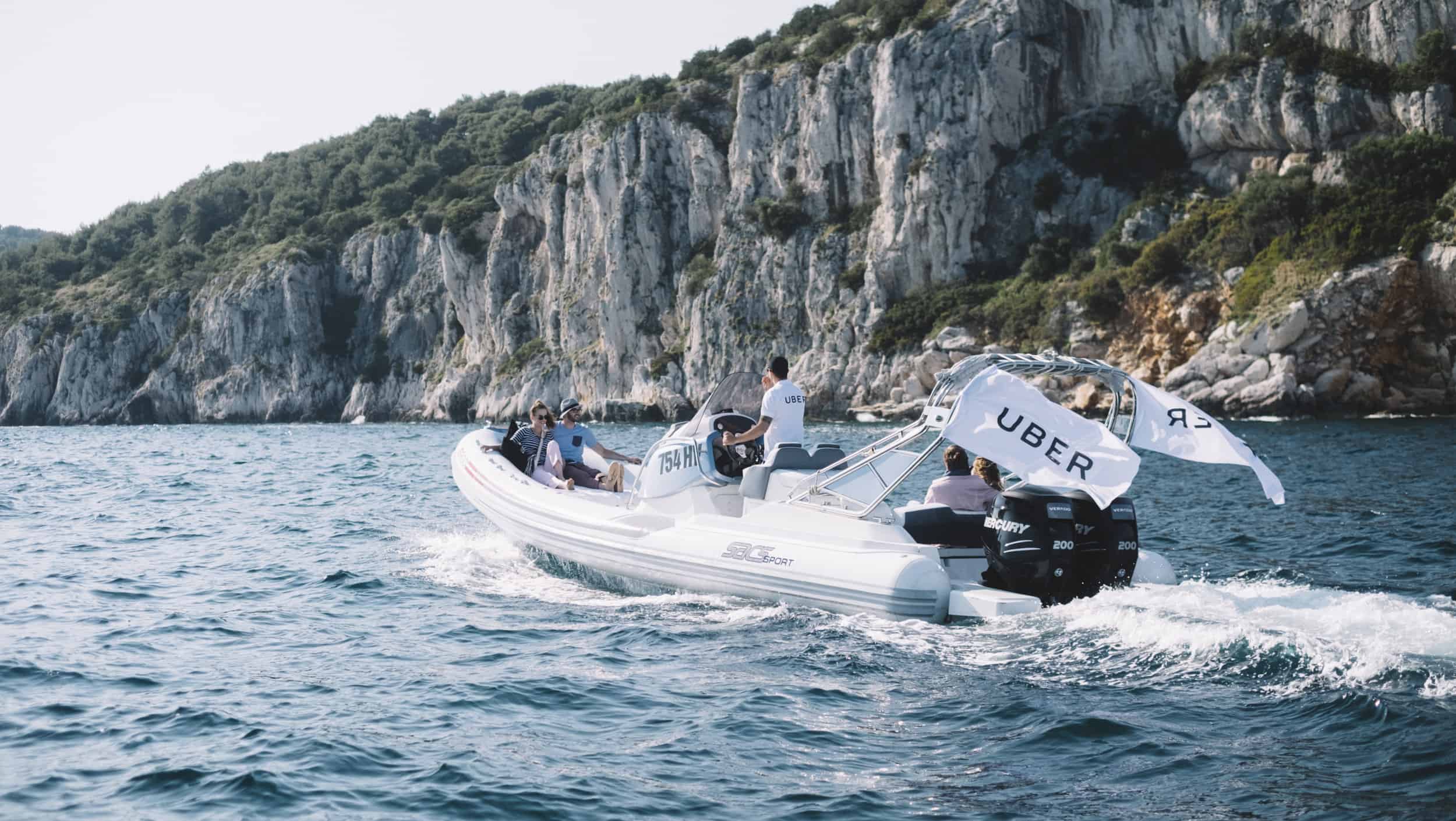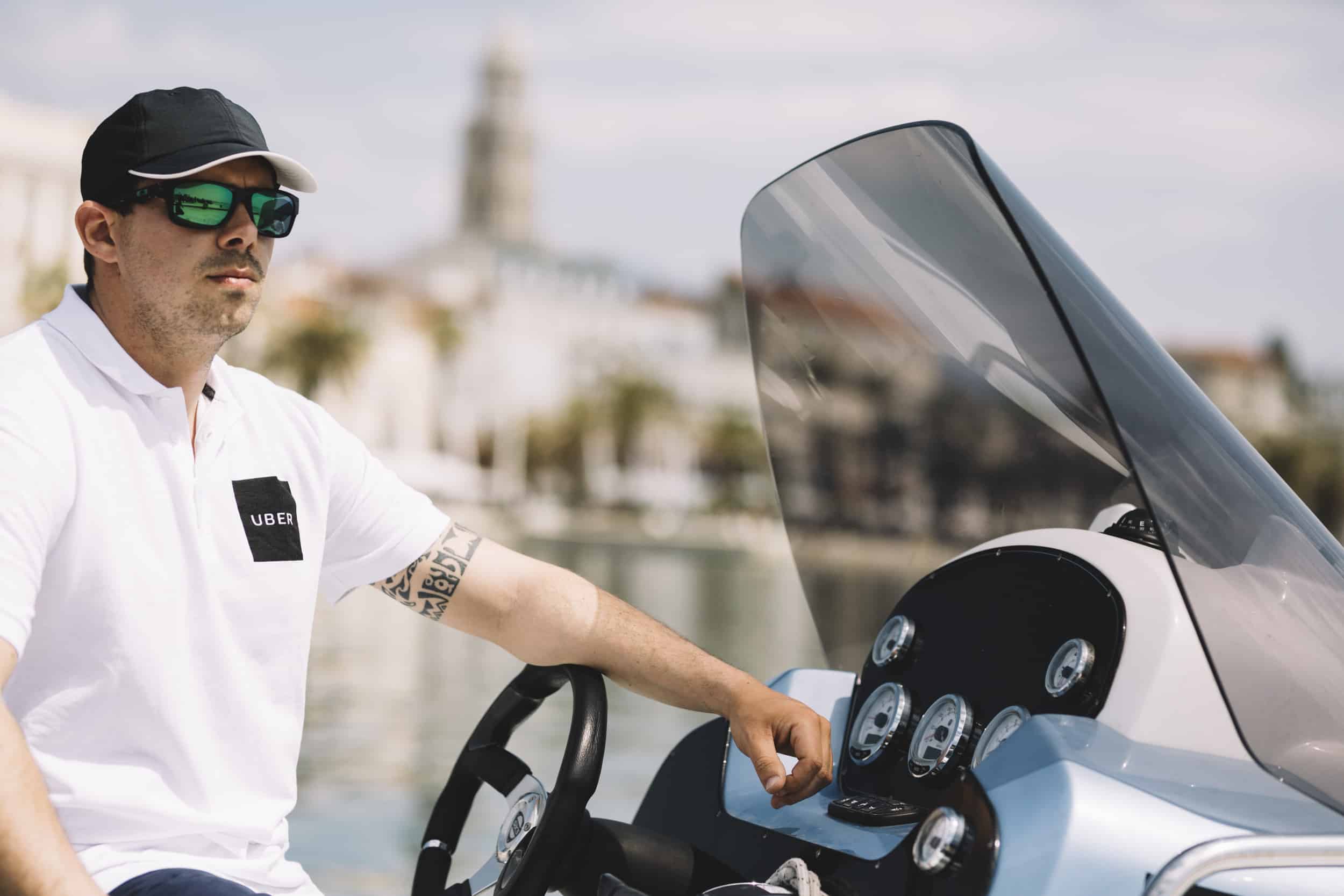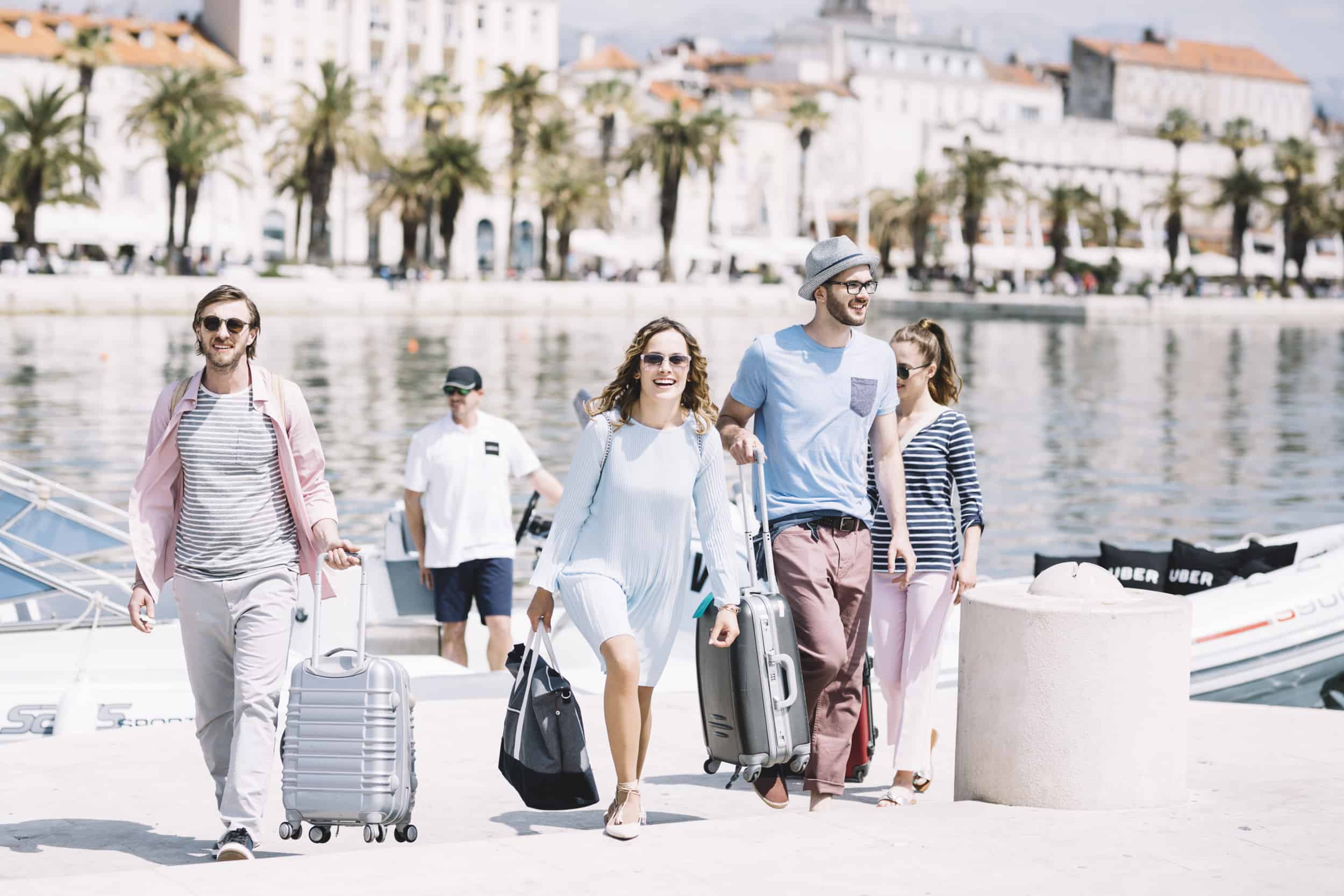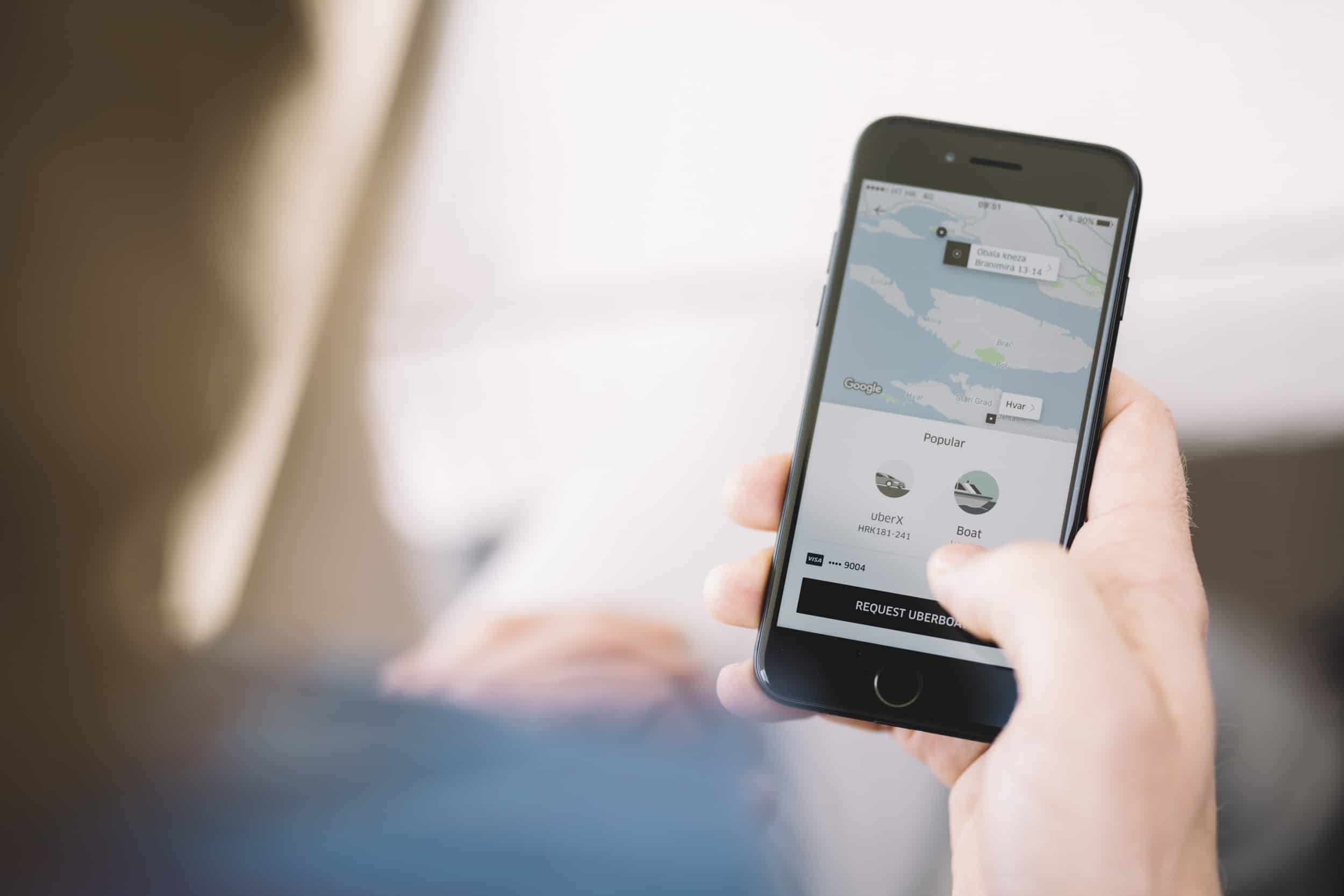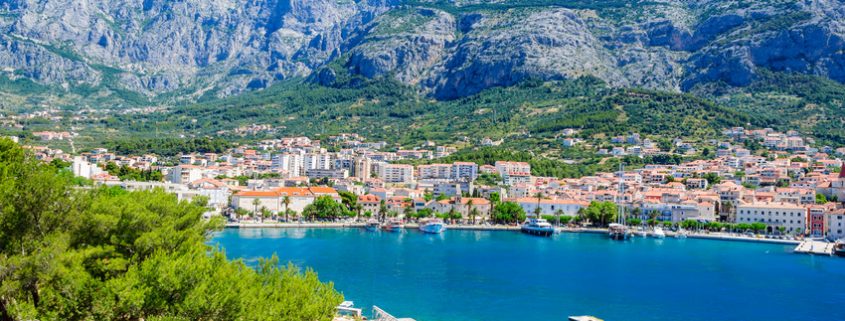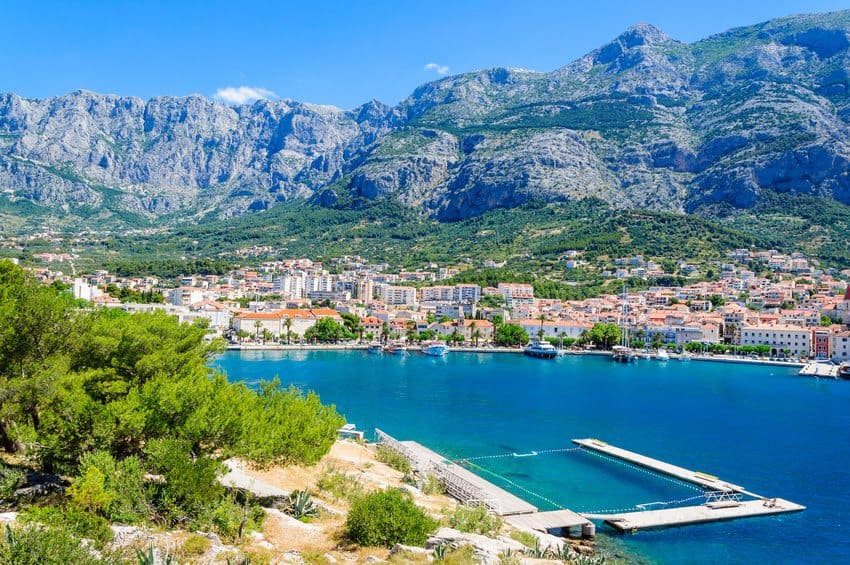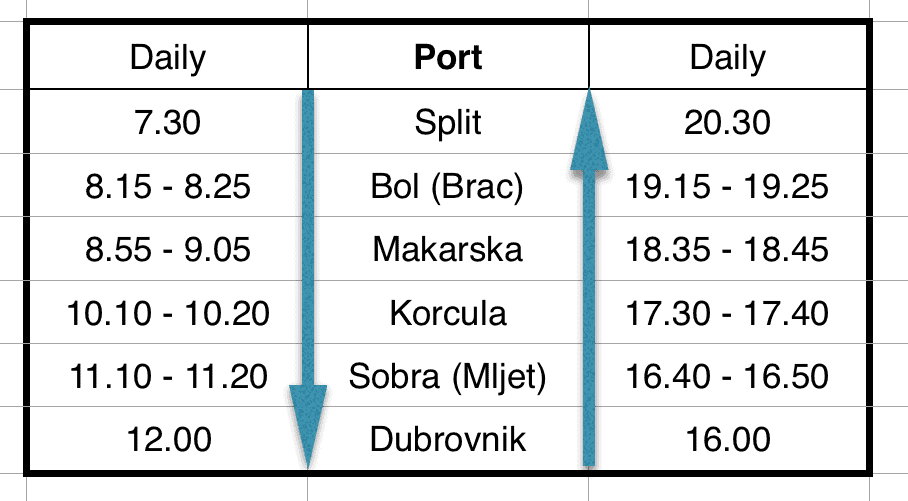We were recently contacted by one of our readers, Anju from New Delhi, who visited Croatia in May 2017 with her family and who wanted to share her experiences of the country. Anju covered a good amount of ground in Croatia, visiting Zagreb, the Plitvice Lakes National Park, Zadar, Split and Dubrovnik.
Check out her fantastically detailed trip report – which she has excellently titled ‘Croatia – The Thousand Island Wonderland’ – below!
Why choose Croatia?
A narrow strip of land tucked away in one corner of the European mainland and a cluster of small islands littered along the Adriatic Sea is hardly likely to catch your attention on the World map but a trip to the beautiful country is sure to make you reminisce your trip with fondness forever. If you love the Sun and beach combo, then a trip to Croatia can be the vacation of your dreams. There are thousands of islands all over, each one more enchanting than the other.
We went to Croatia all the way from New Delhi, India, changing flights from Frankfurt on a Croatian Airlines Boeing to Zagreb, the capital city of Croatia.
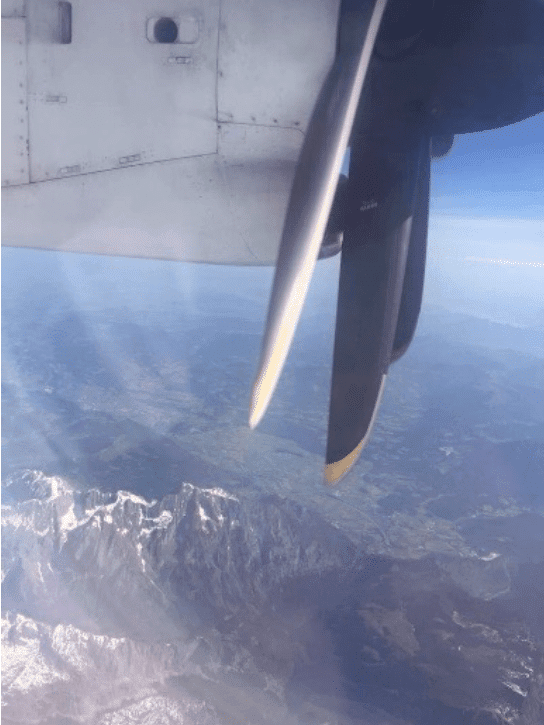
Your vacation starts the moment you board this plane. One can get a beautiful birds eye view of the Dinaric Alps with their snow laden peaks.
Arriving in Zagreb
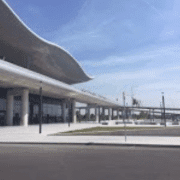 The moment the plane lands in Zagreb, one can’t help but notice that the airport barely looks like an airport from any other mainstream metropolis. I mean not in terms of infrastructure but the human activity around reiterating the fact that this is a sparsely populated country with a total population of 4.2 million.
The moment the plane lands in Zagreb, one can’t help but notice that the airport barely looks like an airport from any other mainstream metropolis. I mean not in terms of infrastructure but the human activity around reiterating the fact that this is a sparsely populated country with a total population of 4.2 million.
Zagreb reminds me of Berlin, it’s a city that has to be experienced and not just seen. So, if you have time on hand, spend a couple of days in this vibrant city. The entire city is well connected with trams. The Upper Town can easily be accessed by a funicular with the journey lasting barely 5 mins. The Upper Town houses St. Marks Church, a Gothic-style structure which stands out with its impressive colourful coat of Arms of Croatia on its rooftop.
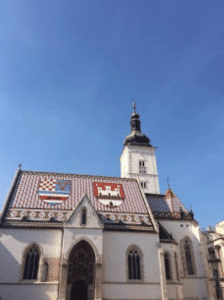 One can do a conducted walking tour to get a better understanding of the history of this place. Coming down from the upper town, one can see a variety of cafes and eateries lining on both sides of the street, the name of which I find hard to remember. It is a pedestrian-friendly area with no dearth of places to sit and munch and watch the crowds go by.
One can do a conducted walking tour to get a better understanding of the history of this place. Coming down from the upper town, one can see a variety of cafes and eateries lining on both sides of the street, the name of which I find hard to remember. It is a pedestrian-friendly area with no dearth of places to sit and munch and watch the crowds go by.
While at the marketplace, an interesting observation I make is that most prominent American/European brands for food chains, clothes, shoes and bags are conspicuous by their absence. Croatia is a small country totally self-reliant on indigenous industry. So, we stop looking for known places to eat and decide to grub on the local cuisine which is heavenly in terms of taste and cheaper in terms of price!
If you’re planning to travel to other parts of Croatia as well, then roadways are your best bet. The journey is comfortable, buses are cheap and ply on time and icing on the cake is the scenic views that you start to get throughout the countryside especially as you approach the sea.
That’s exactly we intend to do. Our next destination is Plitvice. After a comfortable bus journey of around 2 hours, we reach Plitvice.
Plitvice Lakes National Park
Plitvice National Park is a UNESCO World Heritage Site spread over 295 sq kms. In the vicinity of the park are many beautiful small villages with accommodation facility for tourists. We stayed in a spacious apartment in Mukinje.
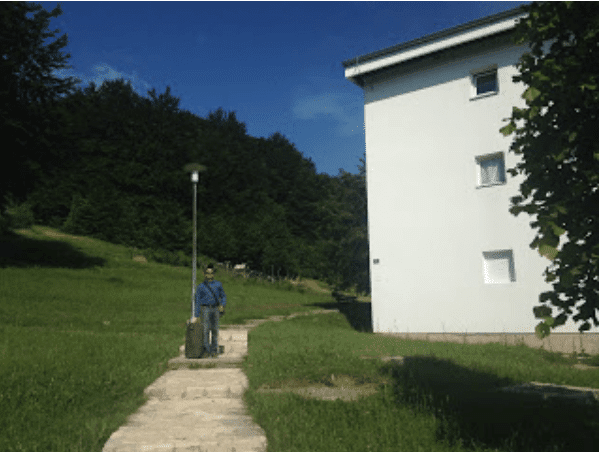
Slight uphill to our beautiful apartment….
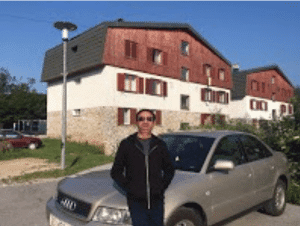
The quaint village of Mukinje!
The weather man had predicted heavy rain the following day, so we decide to set off for the parks the same day. Around 12 noon, we set out for the lakes. The park has many trails that will take you to different parts of the park, so pick one trail and stick to it. The best way to start your journey is from the upper lakes. After some inquiry from the Information office, we opt for Trail H and head straight for the train. After getting off at the next train station, we look around for Trail H and set forth. The trail is 8.9 kms long and is moderately tough. There are other trails also each one laid out on a different route and with varying degrees of difficult terrain.
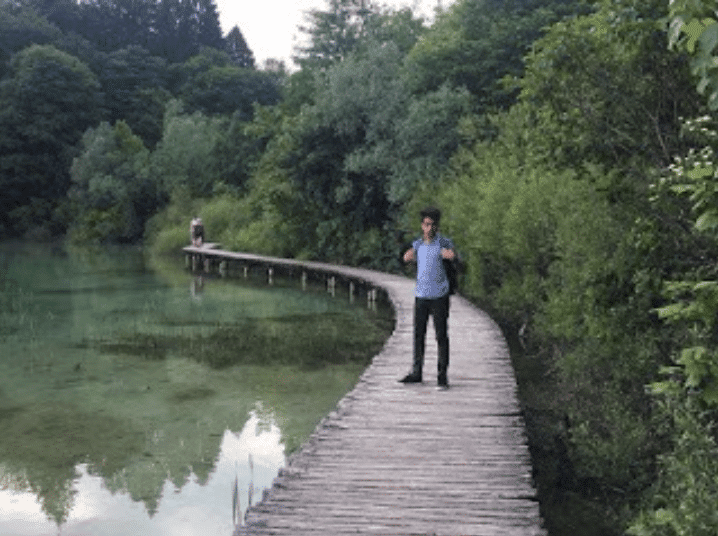
First look of the winding wooden paths….lots more to come!
We are greeted with small waterfalls emerging from everywhere, from behind the bushes and rocks. A sturdy wooden path takes us over a wide lake which is home to a large variety of fish. The path winds further into the park and over a very fast gushing waterfall. We keep on walking on the designated trail and keep soaking in the beauty of this wonder of nature. Every possible variety of waterfall is visible here, small, medium, large, noisy and silent ones, high and low, flowing into the lake and from the lake.
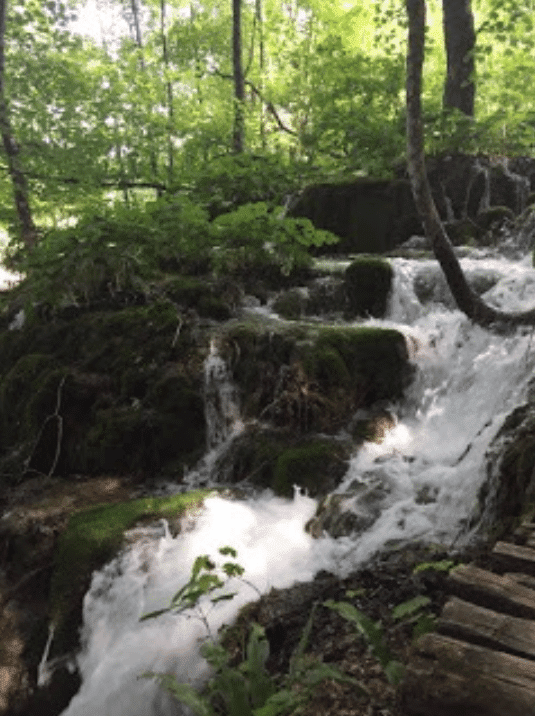
A waterfall at every nook and corner!
The walking trail leads us to the ferry point. The ferry takes us to the other side of the park in continuation of the journey. Ferry and train tickets are included in the entrance ticket to the park. The ferry drops us off at the lower lakes. The scenery is still bewitching but the waterfalls look different. Towards the end of the trail is the signage for the ‘Big waterfall’.
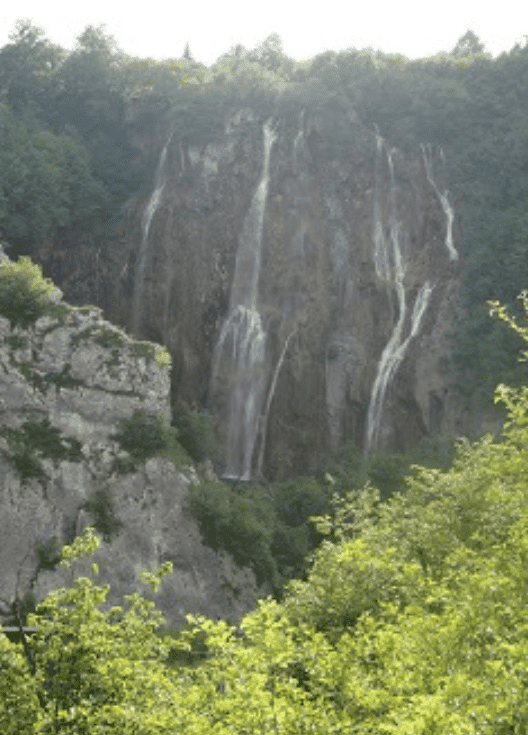
The bewitching ‘Big Waterfall’
If you have the energy to walk an extra couple of kilometres then don’t miss this one, if you do miss it then the only consolation is that the huge cascading waters of the fall are visible in all their glory from the main trail too. So, our trek to the park ends with a welcome ride back to the main station. This long arduous day in the park doesn’t tire one out, so wonder nature is therapeutic!
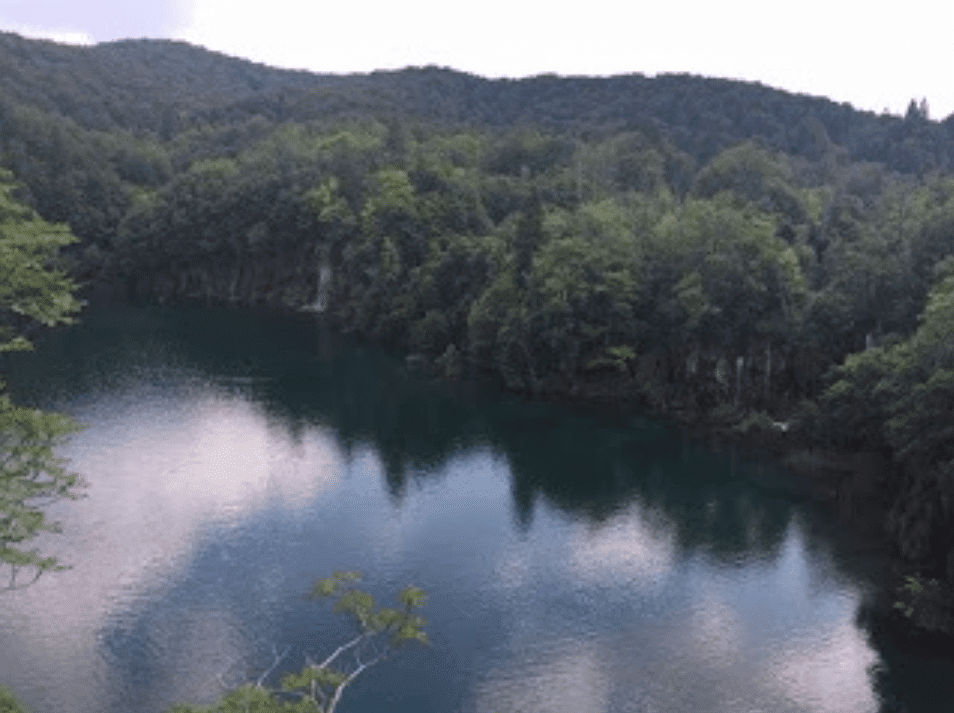
Waterfalls galore!
We bought a 2-day ticket to the park, so we decide to venture out into the park again. I notice for the first time that the waterfalls are visible from the main road leading to the park. This time we take a different trail. It starts from the main entrance leading up to the water front. Equally beautiful with a different view of the waterfalls.
Plitvice National Park is picture perfect, its magnificent beauty comparable perhaps to the Garden of Eden itself.
On to the coast and Zadar
We pack our bags for the third destination in our itinerary. Zadar. Early morning next day we take the bus from Plitvice to Zadar. The journey is only 1 hour 30 minutes and the scenery en route is breathtakingly beautiful.
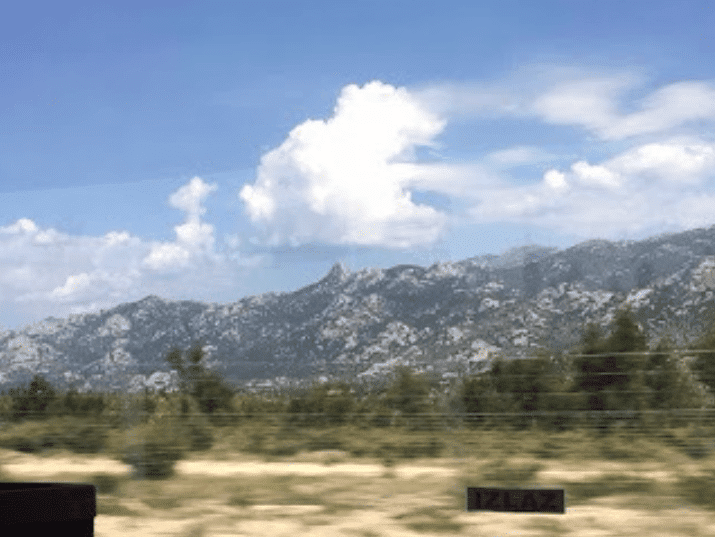
From Plitvice to Zadar by bus
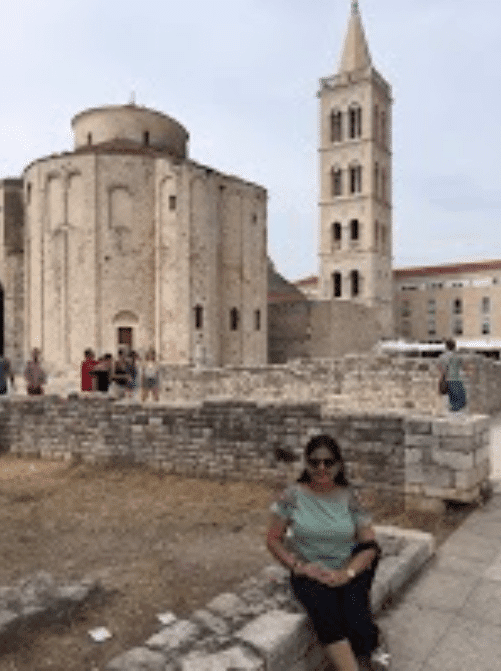 Zadar is a seaside town with most of all tourist activities happening along the sea coast with the most popular among them being the Sea organ. We approach the sea coast from the old town square. Lined with loads of eateries and small shops, the paved narrow streets have something to catch your attention at every step. Trinkets, souvenirs, clothes et al on both sides beckon tourists. These narrow streets lead to an open courtyard with a tower, some historical monuments and a picturesque view of the sea. There are cathedrals and churches aplenty if you have an eye and ear for history.
Zadar is a seaside town with most of all tourist activities happening along the sea coast with the most popular among them being the Sea organ. We approach the sea coast from the old town square. Lined with loads of eateries and small shops, the paved narrow streets have something to catch your attention at every step. Trinkets, souvenirs, clothes et al on both sides beckon tourists. These narrow streets lead to an open courtyard with a tower, some historical monuments and a picturesque view of the sea. There are cathedrals and churches aplenty if you have an eye and ear for history.
The highlight of this outing is the Sea Organ. Huge metallic pipes have been installed under the sea along the sea shore. As water strikes against these wind pipes, a sound of mouth organ emanates out of nowhere. One can sit here for hours on end and listen to this melodious syncing motion of water. ‘Greeting to the Sun’ next to the sea organ right on the sea front is equally intriguing.
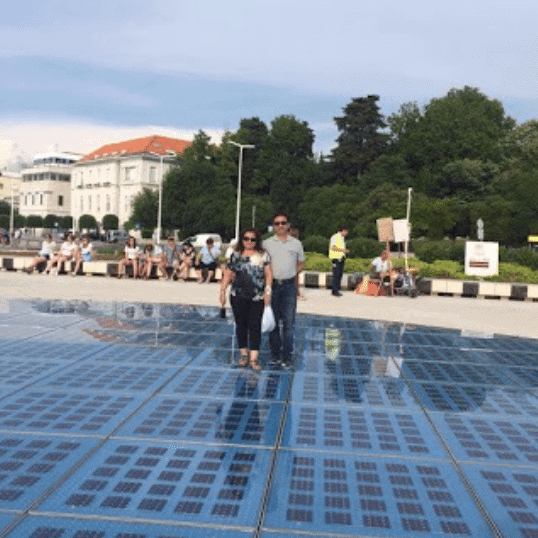 This is the most popular hub for tourists at Zadar and rightly so. As dusk approaches, the waves become higher and the sound from the sea organ increases. The day closes with a spectacular sun set.
This is the most popular hub for tourists at Zadar and rightly so. As dusk approaches, the waves become higher and the sound from the sea organ increases. The day closes with a spectacular sun set.
If you have time just hang around a bit late till the crowds dissipate. You will be able to hear the sea organ more clearly. An overnight stay is enough in Zadar unless you want to come back to the Sea organ next day too. We’re tempted to do the same but we have our bookings in place for our next halt in Split.
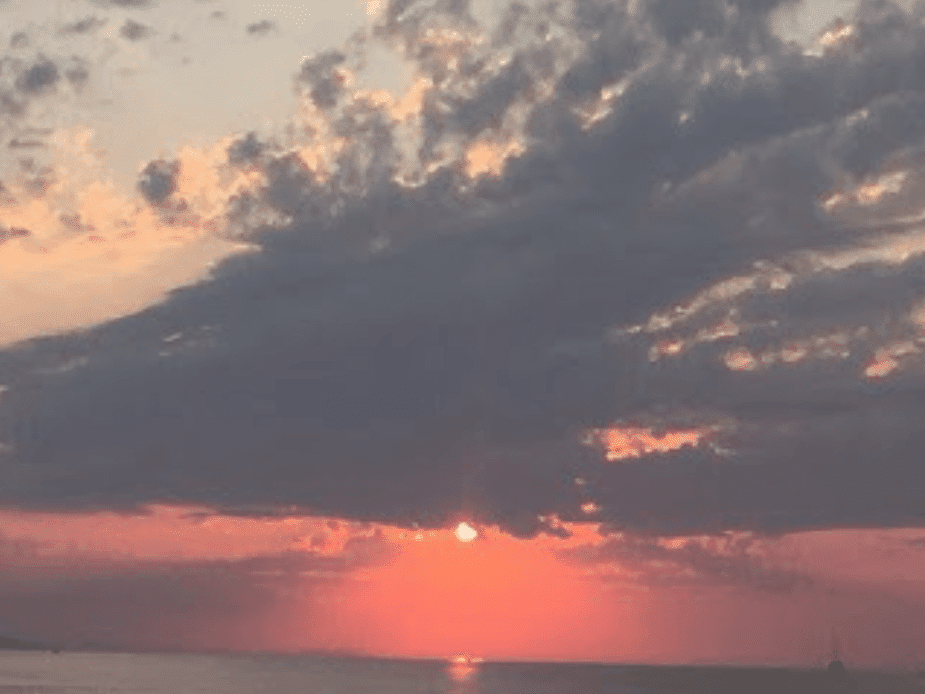
Awe inspiring sunset!
Down the coast to Split
The most talked about attraction in Split is the 4th century Diocletian Palace. The massive structure of the bishop Gregory of Nin right at the entrance to the palace sets the tone for your outing. It’s huge and very impressive. Touching the toe of Nin is believed to bring good luck, so tourists visiting the palace line up in front of the statue to rub its toe.
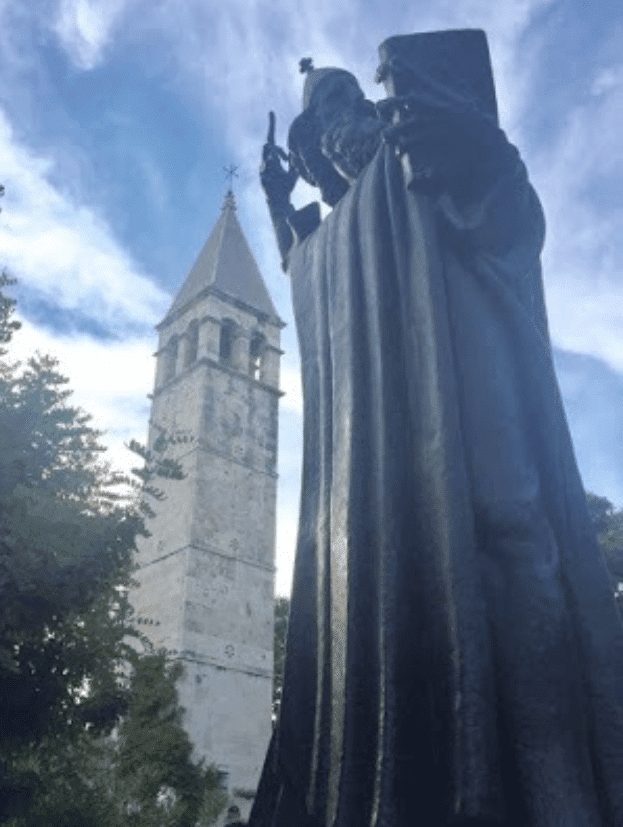

The palace is in ruins yet impressive. There are loads of eateries and shops in every nook and corner, the palace has also been converted into a hotel in some parts. Its lively and buzzing with activity. Inside is also the Cathedral of St Domnius housing the crypt and the Temple of Jupiter. My word of advice, just peep into the temple, don’t buy the ticket, the temple is small, only as far as the eye can see from outside. The Diocletian Palace can easily be a full day outing with the last leg of the day at the sea front. We had dinner at Café Fife just along the sea shore, the taste of their fish delicacy is still making me salivate. Total value for money!
We are fast approaching the end of our journey with our last destination being Dubrovnik. We’ve allocated four days to this city called the ‘Pearl of the Adriatic’. The scenic route on the entire stretch from Split to Dubrovnik can actually make one envious of the people who reside here. Adriatic Sea has been almost ‘customized’ to suit their requirements, there are play areas for children, lounge chairs for elderly, all kinds of boats, personal swimming areas. Every nook and corner of the sea is being put to good use but the water is really clean.
Ending the trip in Dubrovnik
The moment we set foot in Dubrovnik, the touristy air of the place hits us. The air is moist and warm, there are people swarming everywhere and the town is buzzing with activity. We move into a beautiful apartment just facing the sea. Anything less than that would be a shame. The city is enlisted in UNESCO’s list of World Heritage Sites and is every bit so.
The old city is a walled city overlooking the sea surrounded by a thick wall and an old harbour. A walk on this wall is a Must-do attraction. It has refreshing views of the sea. If you’re a Game of Thrones fan, then you will be able to identify some familiar sites along the wall too.
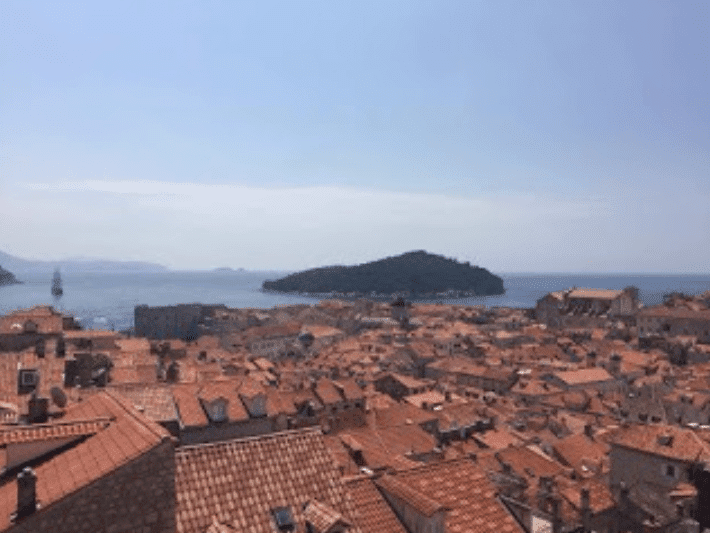
View from the top of the city wall
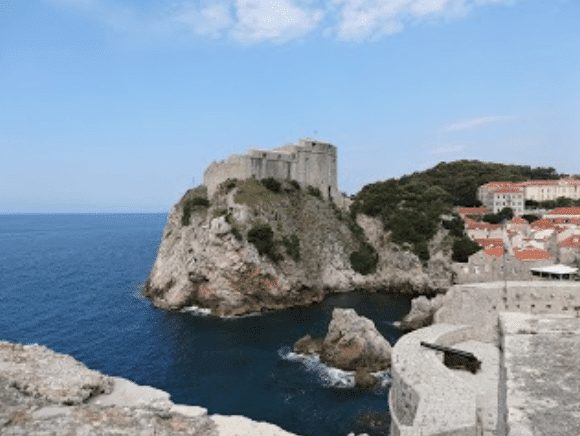
Can you make out where does this feature in Game of Thrones?
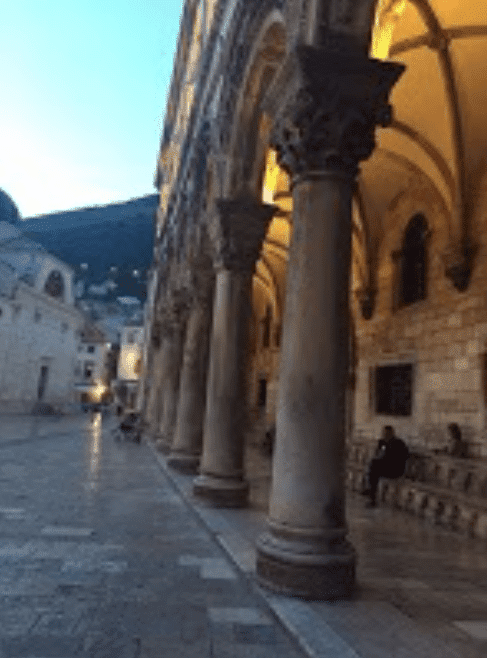 One can easily spend at least 2 days just wandering and idling around in the old city soaking in the history or just doing some monument gazing. ‘Stradun’ or the main street can be fun both during the day and at night. It’s always crowded with tourists and connects the entire old city with lanes and by-lanes. Scores of shops and restaurants are lined up all along that serve local Croatian fish delicacies apart from conventional cuisines. Absolutely not-to-miss!
One can easily spend at least 2 days just wandering and idling around in the old city soaking in the history or just doing some monument gazing. ‘Stradun’ or the main street can be fun both during the day and at night. It’s always crowded with tourists and connects the entire old city with lanes and by-lanes. Scores of shops and restaurants are lined up all along that serve local Croatian fish delicacies apart from conventional cuisines. Absolutely not-to-miss!
Dubrovnik has a lot of islands all around that are a favourite spot for snorkelers and water enthusiasts. We took a one day cruise to Elaphiti Islands. This island-hopping cruise offers beautiful views of the sea and a lot of opportunity for water sport since the sea is so calm. A word of advice for my fellow Indian tourists though, take this cruise only if you really want to splash around in the water otherwise your day trip can be dull because the scenery is pretty much the same.
The highlight of the cruise is the sea gull feeding done by the crew as they hold our little leftover grubs of food for the sea gulls to devour. Out of nowhere the sea gulls flock to grab-a-bite. There is suddenly so much activity with all cameras going into a frenzy to catch that moment. Amazing!

Panoramic view of the sea from the edge of the cliff in Lokrum Island
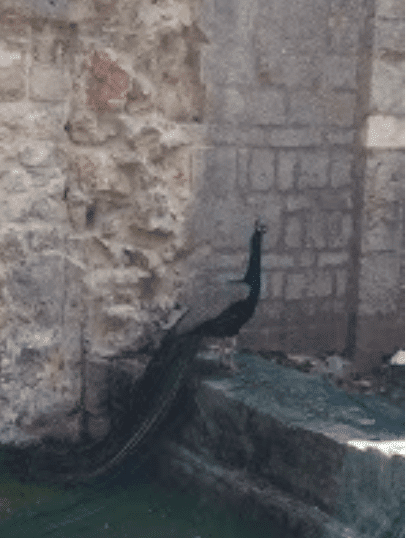
Posing for the perfect picture
Yet another beautiful island that can be explored is ‘Lokrum’. The main attraction is the free-moving peacocks and bunnies all over the island. The birds are so used to having humans around that they actually stay perched on the rocks while everyone is clicking their pictures.
 The island also has a monastery and a small salt-lake aptly called ‘Dead Sea’. Both locals and tourists throng to this lake to soak in the sun and splash around in this lake that is absolutely calm hence the name. The iconic ‘Iron Throne’ from ‘Game of Thrones’ is housed here in the museum, you can take pictures with yourself on the throne.
The island also has a monastery and a small salt-lake aptly called ‘Dead Sea’. Both locals and tourists throng to this lake to soak in the sun and splash around in this lake that is absolutely calm hence the name. The iconic ‘Iron Throne’ from ‘Game of Thrones’ is housed here in the museum, you can take pictures with yourself on the throne.
If you walk all the way to the end of the island to a rocky cliff then you can get some mesmerising views of the sea.
Our Croatian vacation is all set to wrap up as we prepare to take a flight from Dubrovnik to Munich and back home. But this Croatia trip will be etched in my mind forever. The few things that stand out for me is the pristine beauty of this small country, the absolutely delicious local cuisine comprising of local fish variety and the warmth that people show towards tourists in general. After all it’s the people of the land that make all the difference!
Anju Chandna
New Delhi, India
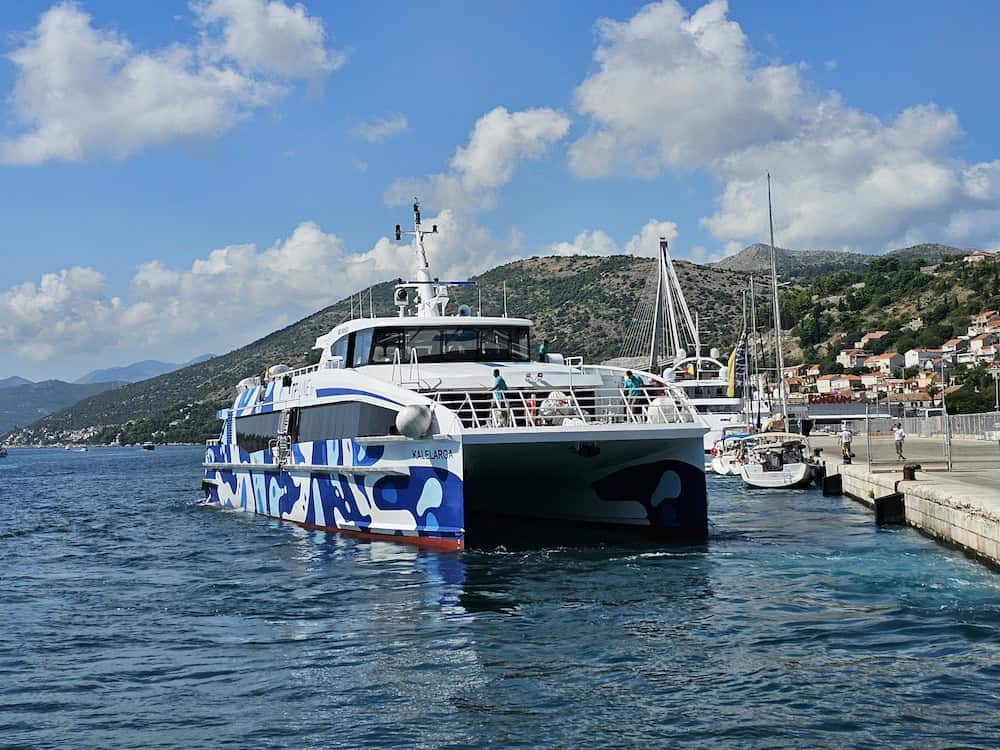
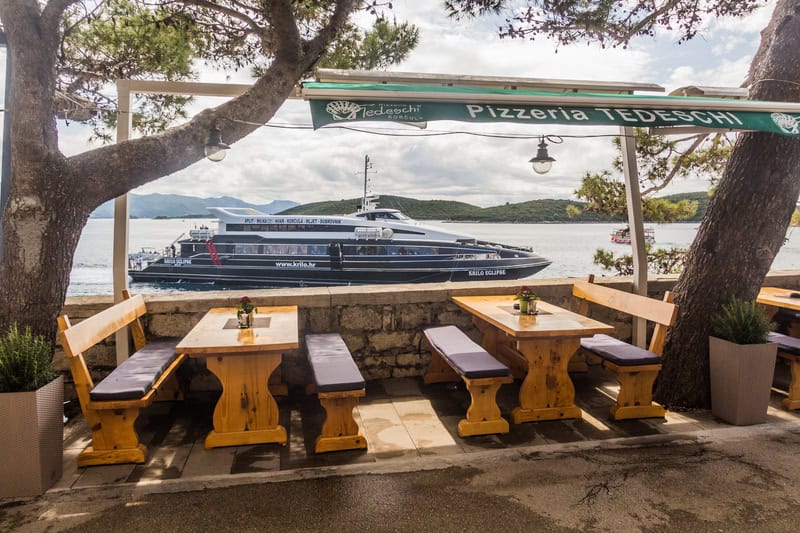
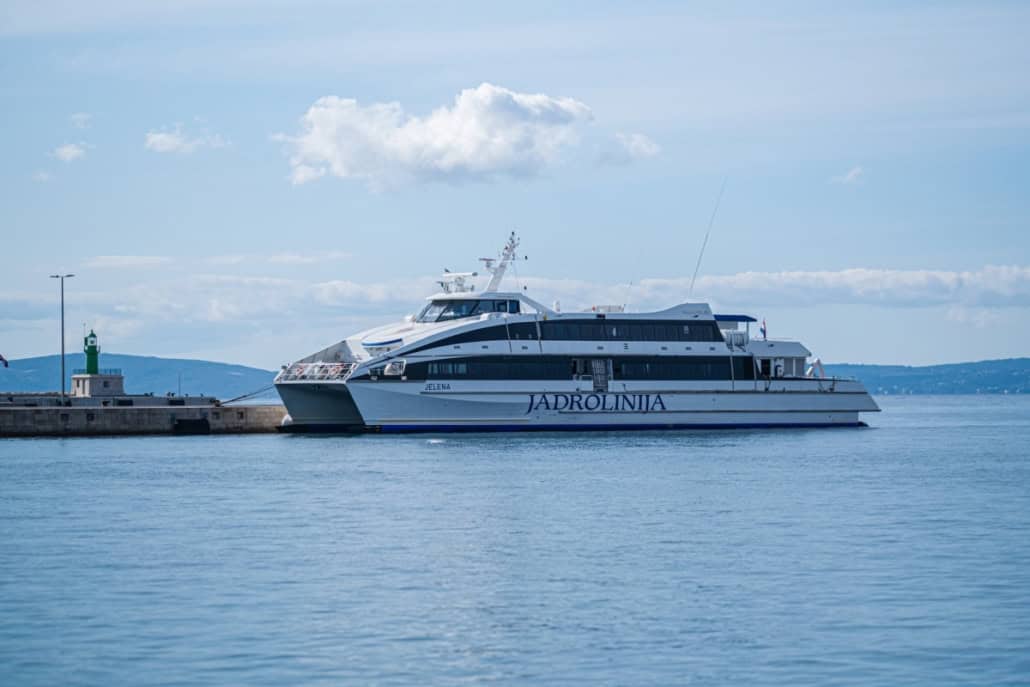


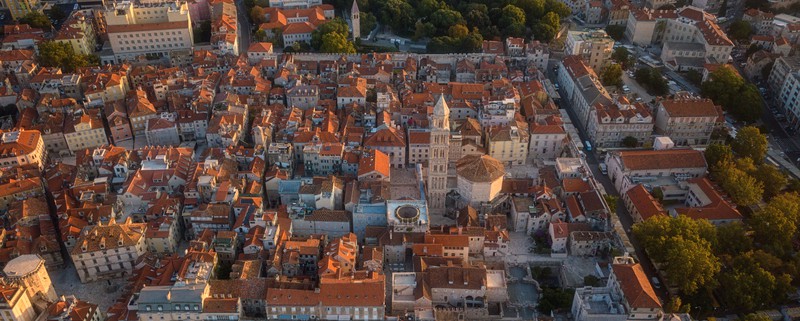
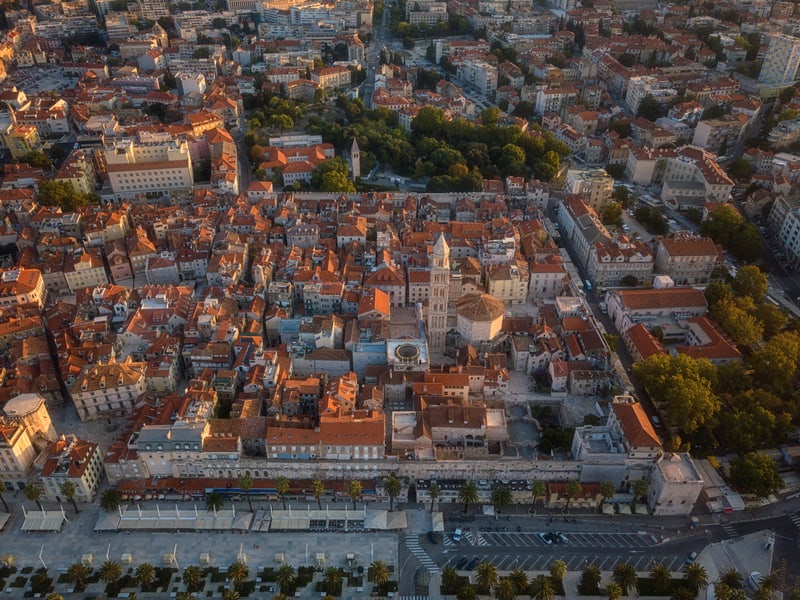

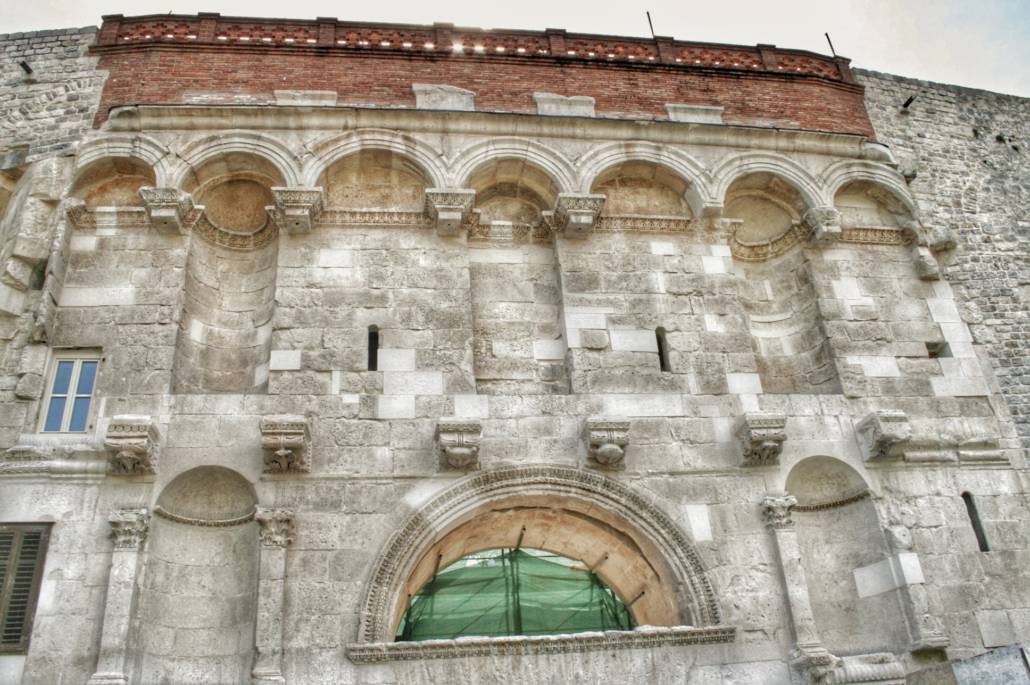
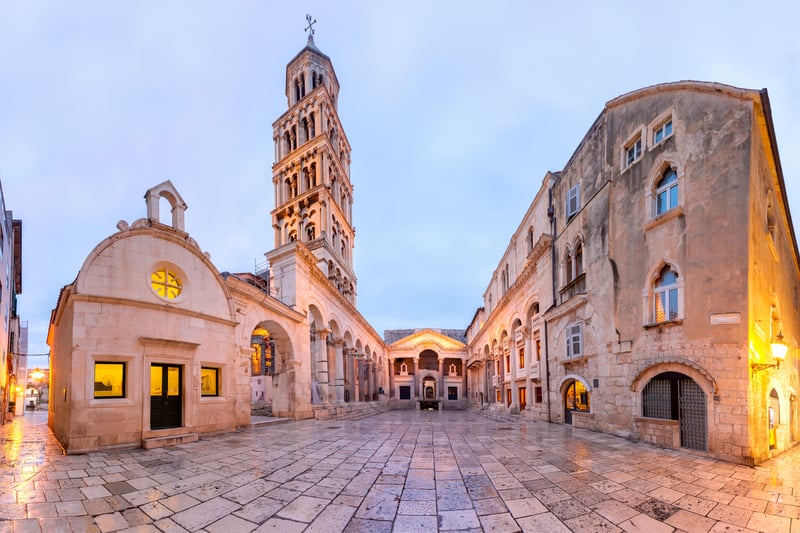
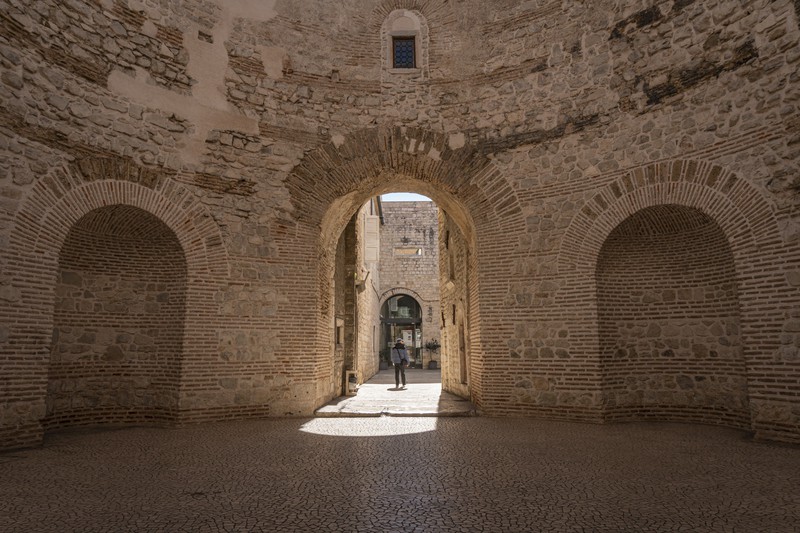
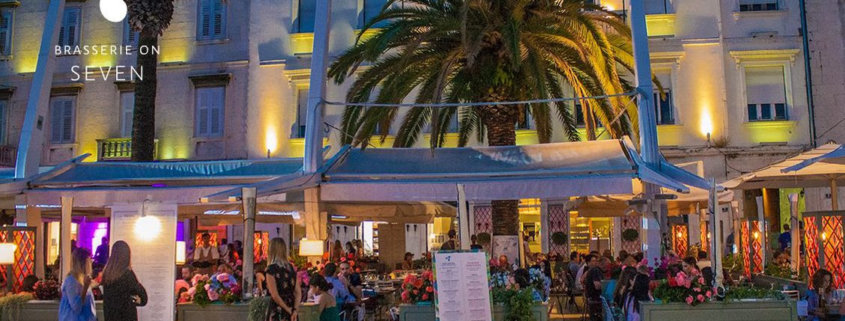
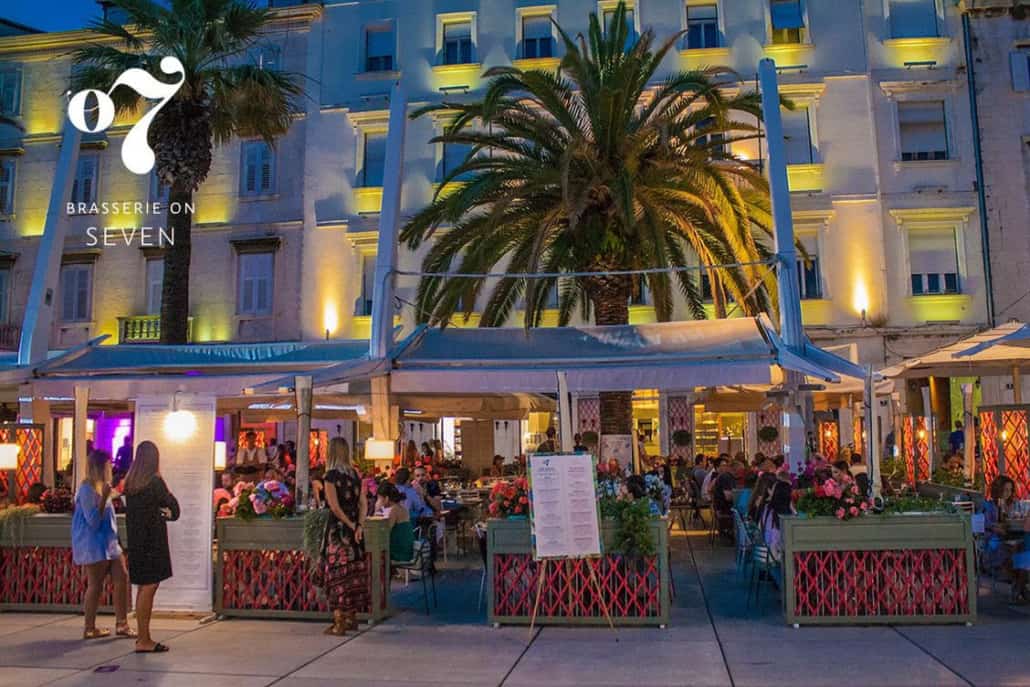

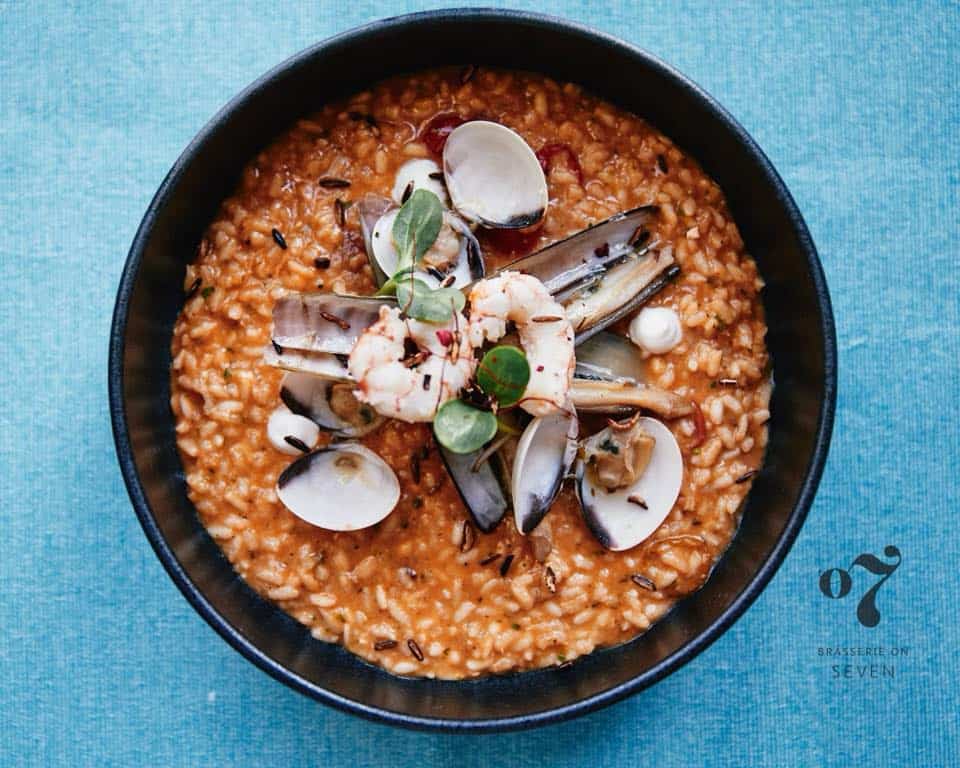

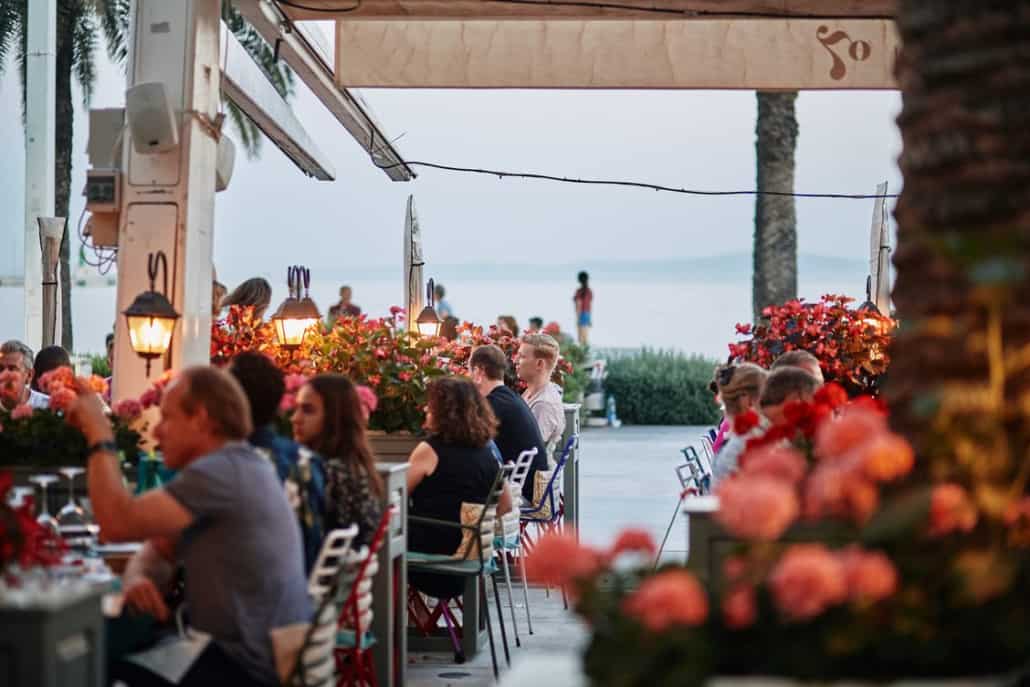
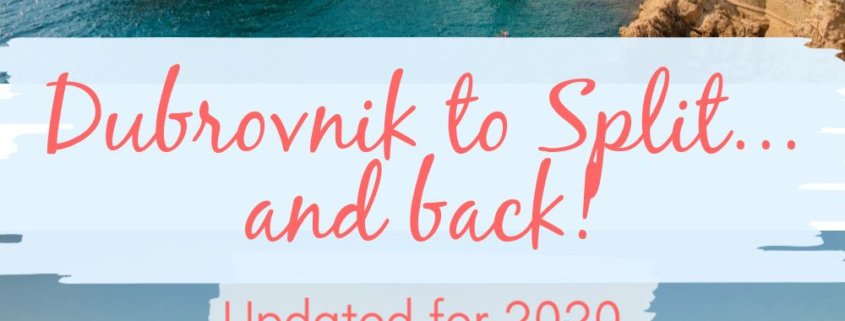
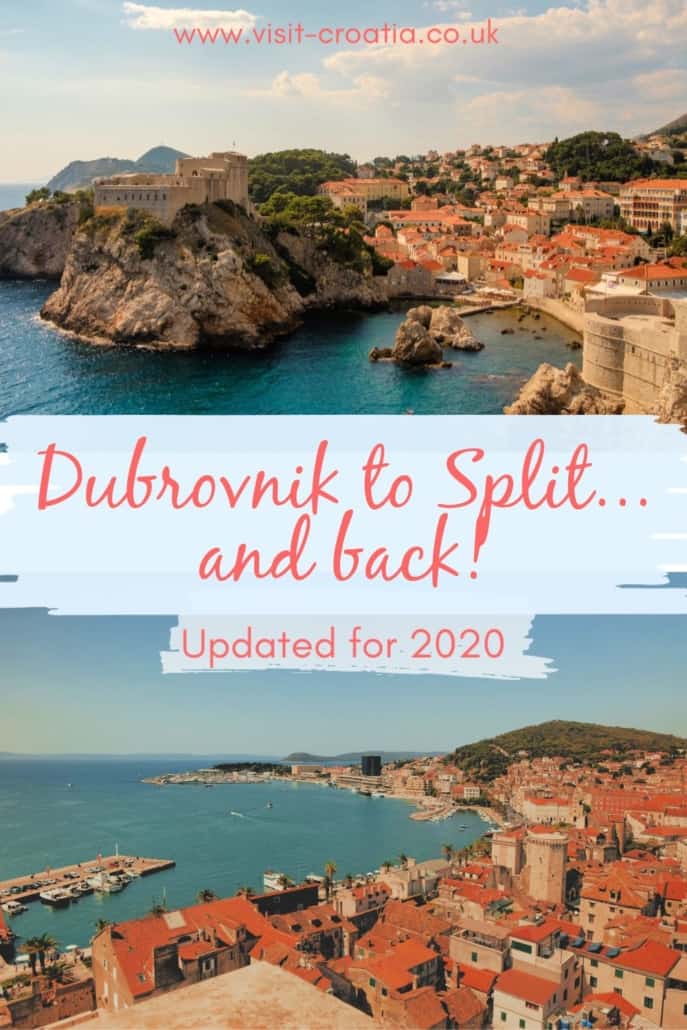
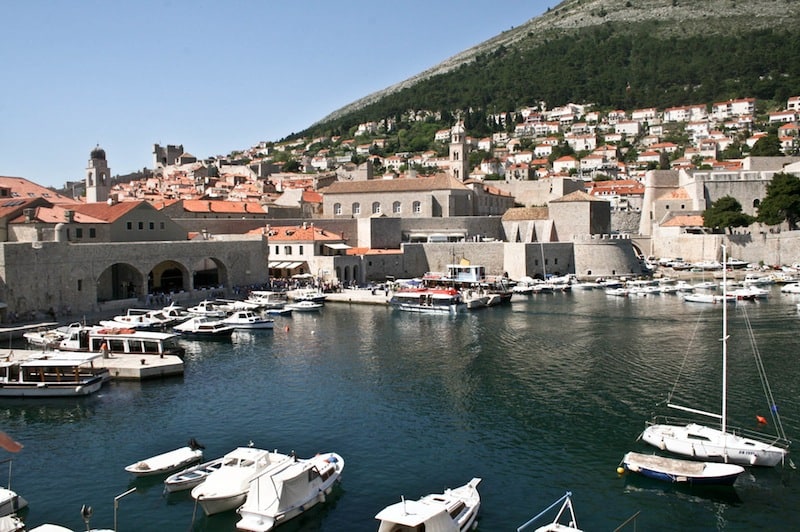
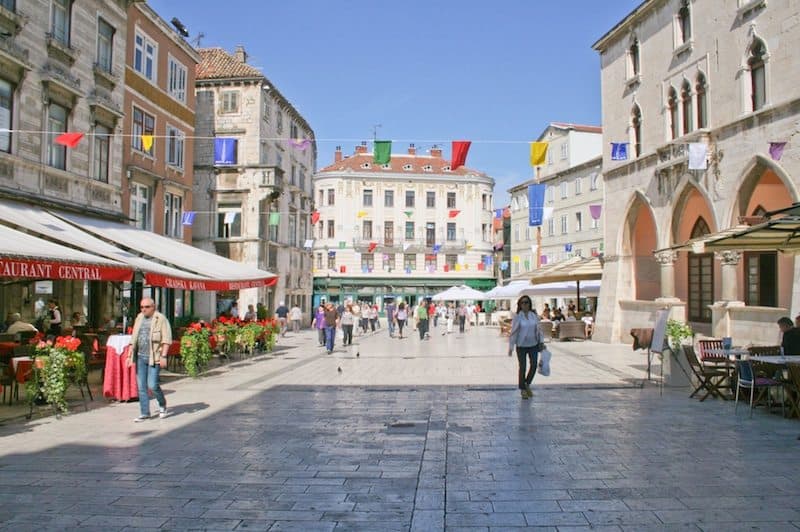
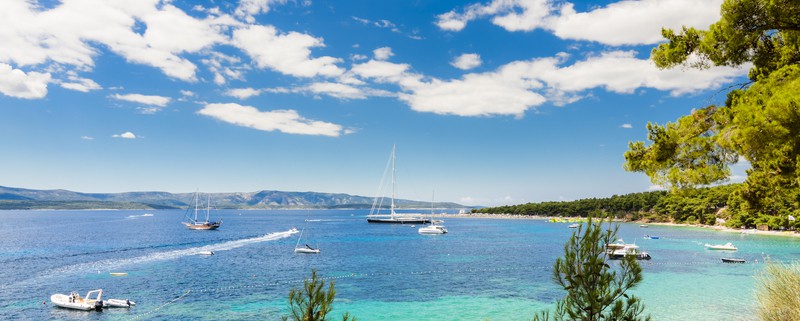
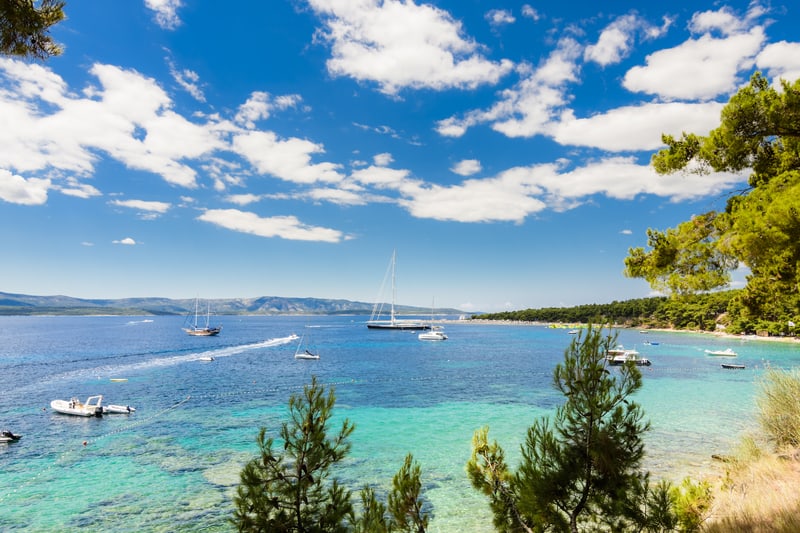


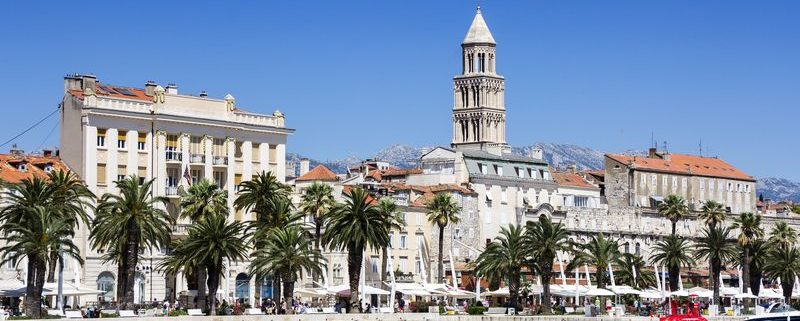





 The moment the plane lands in Zagreb, one can’t help but notice that the airport barely looks like an airport from any other mainstream metropolis. I mean not in terms of infrastructure but the human activity around reiterating the fact that this is a sparsely populated country with a total population of 4.2 million.
The moment the plane lands in Zagreb, one can’t help but notice that the airport barely looks like an airport from any other mainstream metropolis. I mean not in terms of infrastructure but the human activity around reiterating the fact that this is a sparsely populated country with a total population of 4.2 million. One can do a conducted walking tour to get a better understanding of the history of this place. Coming down from the upper town, one can see a variety of cafes and eateries lining on both sides of the street, the name of which I find hard to remember. It is a pedestrian-friendly area with no dearth of places to sit and munch and watch the crowds go by.
One can do a conducted walking tour to get a better understanding of the history of this place. Coming down from the upper town, one can see a variety of cafes and eateries lining on both sides of the street, the name of which I find hard to remember. It is a pedestrian-friendly area with no dearth of places to sit and munch and watch the crowds go by.






 Zadar is a seaside town with most of all tourist activities happening along the sea coast with the most popular among them being the Sea organ. We approach the sea coast from the old town square. Lined with loads of eateries and small shops, the paved narrow streets have something to catch your attention at every step. Trinkets, souvenirs, clothes et al on both sides beckon tourists. These narrow streets lead to an open courtyard with a tower, some historical monuments and a picturesque view of the sea. There are cathedrals and churches aplenty if you have an eye and ear for history.
Zadar is a seaside town with most of all tourist activities happening along the sea coast with the most popular among them being the Sea organ. We approach the sea coast from the old town square. Lined with loads of eateries and small shops, the paved narrow streets have something to catch your attention at every step. Trinkets, souvenirs, clothes et al on both sides beckon tourists. These narrow streets lead to an open courtyard with a tower, some historical monuments and a picturesque view of the sea. There are cathedrals and churches aplenty if you have an eye and ear for history. This is the most popular hub for tourists at Zadar and rightly so. As dusk approaches, the waves become higher and the sound from the sea organ increases. The day closes with a spectacular sun set.
This is the most popular hub for tourists at Zadar and rightly so. As dusk approaches, the waves become higher and the sound from the sea organ increases. The day closes with a spectacular sun set.




 One can easily spend at least 2 days just wandering and idling around in the old city soaking in the history or just doing some monument gazing. ‘Stradun’ or the main street can be fun both during the day and at night. It’s always crowded with tourists and connects the entire old city with lanes and by-lanes. Scores of shops and restaurants are lined up all along that serve local Croatian fish delicacies apart from conventional cuisines. Absolutely not-to-miss!
One can easily spend at least 2 days just wandering and idling around in the old city soaking in the history or just doing some monument gazing. ‘Stradun’ or the main street can be fun both during the day and at night. It’s always crowded with tourists and connects the entire old city with lanes and by-lanes. Scores of shops and restaurants are lined up all along that serve local Croatian fish delicacies apart from conventional cuisines. Absolutely not-to-miss!

 The island also has a monastery and a small salt-lake aptly called ‘Dead Sea’. Both locals and tourists throng to this lake to soak in the sun and splash around in this lake that is absolutely calm hence the name. The iconic ‘Iron Throne’ from ‘Game of Thrones’ is housed here in the museum, you can take pictures with yourself on the throne.
The island also has a monastery and a small salt-lake aptly called ‘Dead Sea’. Both locals and tourists throng to this lake to soak in the sun and splash around in this lake that is absolutely calm hence the name. The iconic ‘Iron Throne’ from ‘Game of Thrones’ is housed here in the museum, you can take pictures with yourself on the throne.
